Game of Thrones Spinoff: What to Expect From the Age of Heroes
The Game of Thrones spinoff prequel will be set in the golden Age of Heroes. Here are 11 tales from that era that are ripe for exploration.
While Game of Thrones is poised to meet the Many-Faced God of TV Death next year, our dance with George R.R. Martin’s dragons has only just begun. Indeed, HBO famously commissioned the development of five pilots last year, all potential prequels set at different points in the Westerosi timeline. Now at least one has been ordered to pilot: Jane Goldman’s spinoff set thousands of years ago during “the golden Age of Heroes.”
The developing series is immediately intriguing for more than just its Game of Thrones pedigree. After all, Goldman co-wrote the screenplay adaptations for Kick-Ass, X-Men: First Class, Kingsman, and most fortuitously Stardust. The latter might even be a guide to how she and Martin (who co-created the overarching storyline for Goldman’s prequel series) will seek to differentiate the Game of Thrones prequel spinoff with the mainline series. Nevertheless, we know it is set in one Westeros’ most mythical and enigmatic eras.
From the tidbits scattered throughout the trenchant tomes that comprise Martin’s “A Song of Ice and Fire”—as well as the many secondary texts he’s had published about Westeros over the years—we know the Age of Heroes was a time of high fantasy and vast magic. It also was vast, period. Lasting for about nearly 4,000 years, it really is impossible to say we know what will happen. Still, we can take an educated guess as to what might happen based on some of the most popular stories from that period which have been passed down to curious Bran Stark while sitting on Old Gran’s knee, or to a skeptical Tyrion bored with his own mythologized lineage. This was supposedly the time of Bran the Builder and the Kings of Winter; the time of children’s laughter in the forest and ice spiders in the dark; the time of Heroes.

Different Bran, Same Wall
Perhaps the most seismic event that occurred in the Age of Heroes is Brandon the Builder constructing the Wall that guards the realm of men (and decided who was free to travel where they please, and who was doomed to live forever in the land of eternal winter).
In actuality the entire series might very well build to this major development, given the Wall was constructed at the end of the Age of Heroes after the Long Night. We already know from HBO’s official synopsis that we will study the “true origin of the White Walkers… and the Starks of legend.” This in itself clues us into the idea that it will be set in the middle of the Age of Heroes, which was about 8,000 years before Game of Thrones. After the Long Night (more on that later), Brandon Stark according to legend built the Wall of ice, either with magic or the aid of giants, depending on who you ask.
From that day forward the Night’s Watch was formed, and unlike in the current timeline, they were an order of the highest regard, situated just north of Winterfell. In fact, Brandon Stark is also alleged to have masterminded the construction of Winterfell’s ancestral seat (we wouldn’t be shocked if it’s revealed he only built one or the other in the series and perhaps took credit for both). It is in Winterfell he was named the first King in the North, with a lineage that spans all the way to Eddard Stark and his progeny on the current Game of Thrones. Albeit, the Kings of Winter lost their crowns when Torrhen Stark became “the King Who Knelt” before Aegon the Conqueror about 300 years before Jon Snow was born.
A story of how the Starks came to power, perhaps not so heroically as we once were led to believe, might be worth a long series. One even be informed by The Long Night.
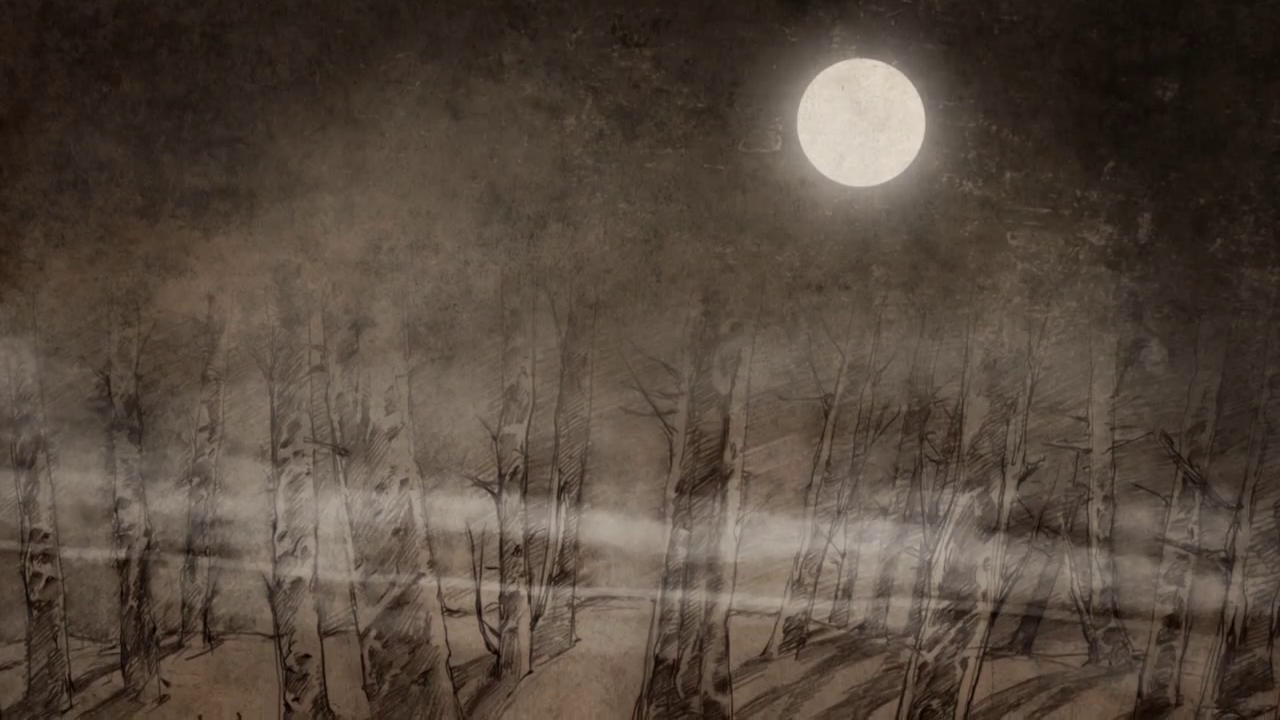
The Long Night
Indeed, the Long Night walks hand-in-hand with the Wall, meaning both of these elements will be part of the series. One even wonders, for narrative variation’s sake, if the first season of the Game of Thrones prequel will be about an end to the Long Night, as that darkness is said to last a generation.
A period of years and years of complete darkness and heavy snowfall, it is said kings and peasants alike lived and died in frozen hell without ever seeing the rays of morning glory. It was in this perpetual blackness that true winter, and the White Walkers, came. Given that we know the prequel will address the origin of the White Walkers, this will almost certainly play a part in the series, presumably closer to the beginning as building to this event would be incredibly reminiscent of Game of Thrones’ story structure. And unlike what will presumably be the winter of our current series, it is said this cold saga lasted decades. Aye, Old Nan summarized it best:
“Oh my sweet summer child, what do you know about fear? Fear is for the winter, when the snows fall a hundred feet deep. Fear is for the Long Night when the sun hides for years, and children and live and die, all in darkness. That is the time for fear, my little lord—when the White Walkers move through the woods. Thousands of years ago, there came a night that lasted a generation. Kings frozen to death in their castles, the same as the shepherds in their huts, and women smothered their babies rather than see them starve, and wept. And felt the tears freeze on their cheeks.
… In that darkness, the White Walkers came for the first time. They swept through cities and kingdoms, riding their dead horses, hunting with their packs of pale spiders as big as hounds.”
So could we see these mythic giant spiders? At this point, if the prequel has season 7 and 8 sized budgets, I don’t see why not. It also honestly sounds like an even grimmer time than where Game of Thrones season 8 is headed…

The Children of the Forest Unifying with the First Men
According to legend, a band of heroes set out to find the Children of the Forest, who in the Age of Heroes lived throughout the continent of Westeros in a state of alternating conflict and peace with the First Men. It wasn’t until the Andals came (2,000 years after the Long Night) that the Children of the Forest were alleged to have been hunted to near extinction by man. And yet, we know from Game of Thrones Season 6 in a flashback that the Children of the Forest created the White Walkers to combat the encroaching settlements of the First Men.
read more: Game of Thrones Season 8 Predictions and Theories
Obviously, there is plenty of ambiguity to unpack here, however what is clear is that the “last hero” made a pact with the Children of the Forest after being the lone Dungeons & Dragons styled adventurer to survive the White Walkers, Giants, and other monsters who hid in the woods. And after a new alliance between the First Men and Children was formed, the two were able to drive back the White Walkers to the Land of Always Winter in the War for the Dawn. Afterward, the First Men and the Children had a relatively prosperous peace until the Andals came and created the Southron Kingdoms—ending the Children of the Forest and slaughtering their Heart Trees south of the Neck.
But prior to that point, the Children of the Forest and the First Men lived in relative harmony, with the Heart Trees and weirwoods growing throughout Westeros. The First Men, Ned Stark’s ancestors, even took up what became the “old gods” worshipped by the Children. It is said the Children carved the faces into the weirwood, which lasted longer than any name until a millennia later when the Andals brought their axes.
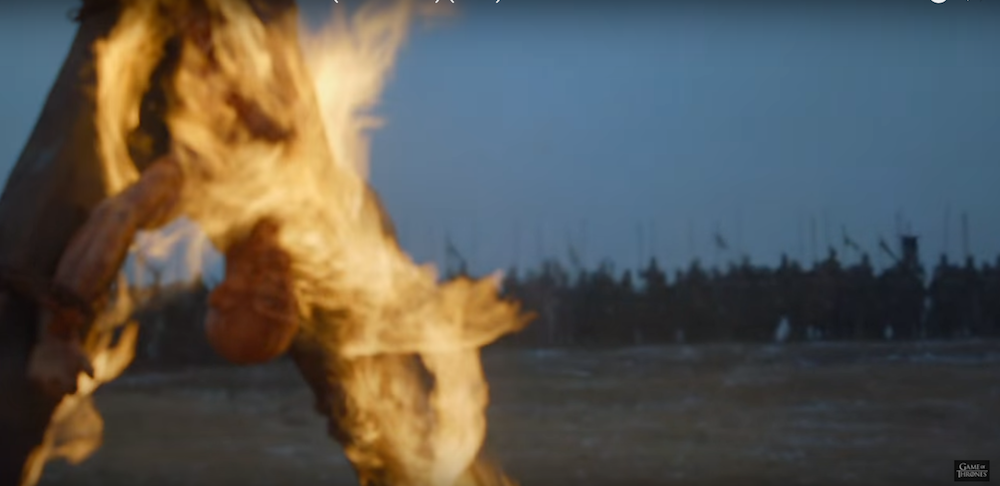
The Boltons vs. the Starks Round 1
While this is a bit repetitious given how Game of Thrones Season 6 played out, one also must wonder if the origin for the Starks and Boltons’ uneasy relationship will be explored. After all, it is in the Age of Heroes that the Boltons earned their sigil of the flayed man.
In fact, the Boltons technically are of an older royal lineage than the Starks. For when Bran the Builder became the first King of Winter, he was not (technically speaking) the actual King in the North. That is because southeast of Winterfell, it is believed the Boltons ruled as the Red Kings of the Dreadfort. Lords of their own territory, they were in a state of constant rivalry with the Starks. It was during this constant give-and-take for power that the Boltons are alleged to have begun skinning Starks alive when they were captured. Several Starks were almost certainly flayed alive and had their flesh hung like flags from the ramparts of the Dreadfort (hence the symbol of House Bolton). Other Starks became cloaks of human flesh to be worn by Red Kings, including after King Royce Bolton II burned Winterfell to the ground for the first time (King Royce Bolton IV followed in the family tradition generations later).
The Red Kings didn’t truly submit to Stark rule—thus unifying the north under the Winterfell banner—until the Age of Heroes ended with the Andal invasion. Until Rogar the Huntsman bent the knee to the Kings of Winter, the Boltons were a thorn in Winterfell’s side, even if they occasionally united with their rival against a common foe like Bael the Bard.
Who is Bael the Bard you ask? Well…

Bael the Bard’s Treachery
Long before there was Mance Rayder or even Jon Snow’s brief flirtation with being King in the North, including to the wildlings, there was ol’ Bael. Legend has it that Bael was the first King Beyond the Wall, and he was also a bit of a smartass if truth be told.
Prior to his war with Winterfell, Bael actually visited the Stark ancestral home in disguise. Apparently a Brandon Stark (but not the Brandon the Builder Stark) had called King Beyond the Wall a coward, so the celebrated raider of the free folk climbed the Wall and visited Winterfell in disguise as a singer. With a voice so silky smooth that he even impressed his Stark lord, Bael was offered any reward he wanted, so Bael requested “the most beautiful flower blooming in Winterfell’s gardens.” Brandon gave Bael a blue rose, but Bael disappeared with Brandon’s adult, virgin daughter. He also left the blue rose Brandon had mistaken as Bael’s request in her bed….
Bael is said to have fathered the Stark girl’s bastard in the crypts of Winterfell, and her son went on to become the new Lord Stark, because the house’s line was near extinction. Decades later Bael returned to the Wall with his army and tried to breach it. Yet upon meeting his bastard son, now King of Winterfell, before the icy barrier, Bael couldn’t bring himself to raise a weapon against the lad. So he instead let himself be beheaded by his own child. Apparently oblivious of his patricide, this Stark brought back Bael’s head to Winterfell, causing his mother to commit suicide by throwing herself from one of Winterfell’s towers. This son of Bael was in turn slain by the Boltons and turned into a nice human coat.
Twisted? Sure. We imagine there is more to it, especially given how it is either a Stark or Bolton who is likely the…
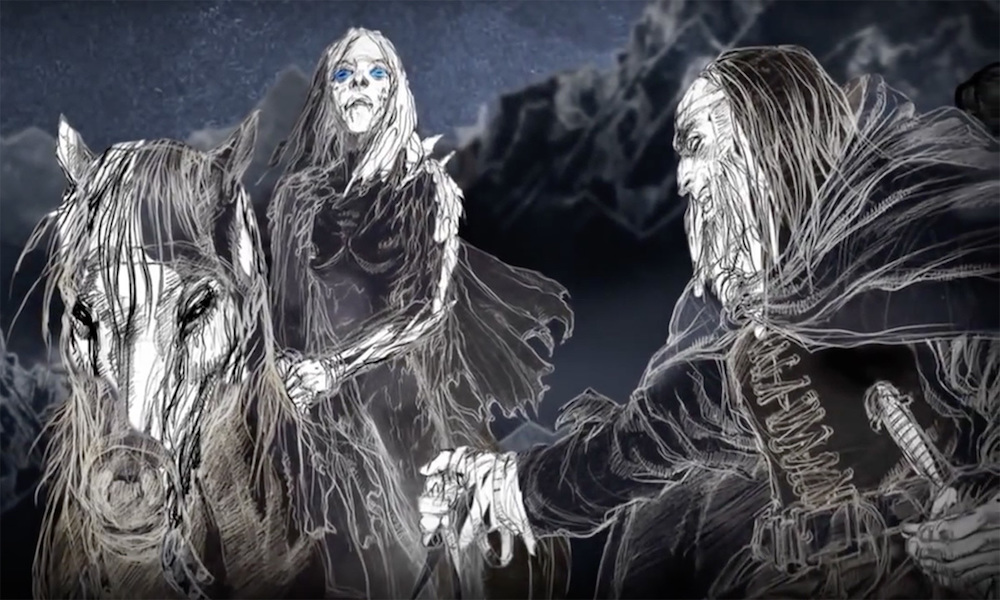
The Night’s King
It is easy to imagine a Game of Thrones prequel conflating Brandon the Builder with Brandon the Bael’d given it is hinted that cruel chapters in family history have been well erased. Such is the legend of the Night’s King, who should not be confused with the Night King that’s currently riding an ice dragon on Game of Thrones.
It is said that not long after the Wall was built (so after the Long Night), a particularly wicked Lord Commander of the Night’s Watch fell in love with a woman beyond the Wall. It also said she was blessed “with skin as white as the moon and eyes like blue stars… her skin was as cold as ice.” While maesters have since insisted that this was a Barrow King’s daughter (the Barrow Kings lived closer to where the Wall is now and called themselves Kings of the First Men, predating the Starks), everyone else with common sense knows this is obviously referencing a White Walker.
This undead bride, taken by an oathbreaking Lord Commander, led to a time of darkness falling upon the Wall. It is said this “Night’s King” took his bride and an enslaved legion of Night’s Watch conscripts to the Nightfort and reigned there for 13 horrendous years. It’s still whispered in the North that he and his wife committed unspeakable atrocities that included torture, human sacrifice, and ritualistic butchery as they mingled sadism with sensuality. This was put to an end by Brandon the Breaker (yet another Brandon Stark), King of Winter, and the then-King Beyond the Wall, Joramun. They laid siege to the Nightfort from both sides of the Wall after they learned the Night’s King was feeding children to the Others (the novels’ name for the White Walkers). And they routed them too.
read more: Game of Thrones Season 8 – Everything We Know
After the Night King’s execution, the Starks erased all trace and written record of the fiend. Yet some believe there is an ulterior motive, including that the Night’s King was a Stark himself who’d gone lecherous. Others argue he was a Bolton, but who had the most to gain from erasing his name from the history books?
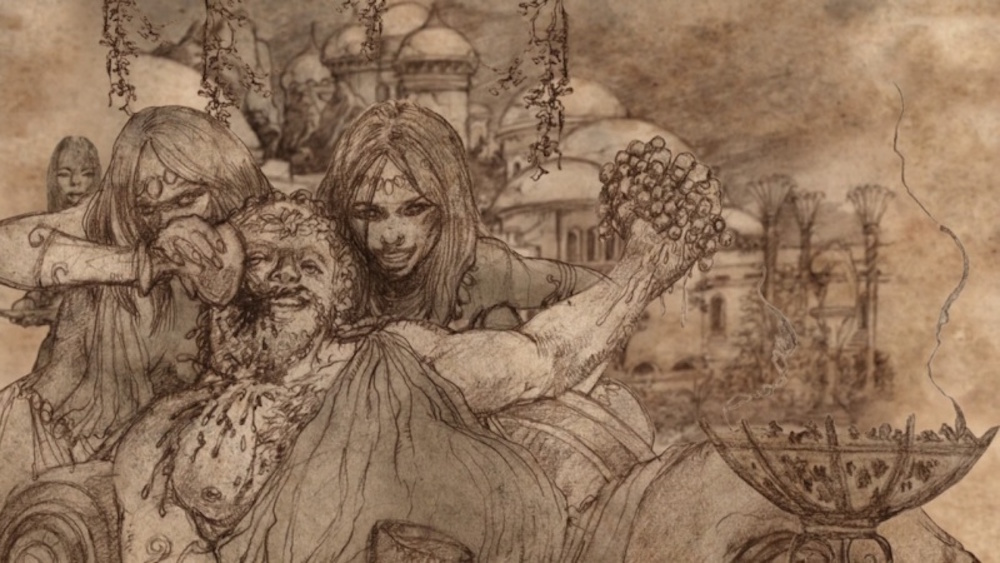
Garth Greenhand Gets Handsy
Yet if you’re curious about something happening that is unrelated to Northernmen shenanigans, look no further than Garth Greenhand, the supposed paterfamilias for the vast majority of houses in Westeros. While some even claim he was the father of Bran the Builder, it is more likely that Garth was his contemporary, and a lascivious one at that.
Earning wealth and power for supposedly teaching smallfolk how to farm, it is also likely he mastered irrigation and the ability to move and find water when not sitting exactly on a river. Maesters have later diminished his standing, claiming Garth was but a war chief who was the first king to cross the deserts of Dorne and cause the southern spear to bend the knee. No matter what though, he is considered the High King of the First Men, ruling across the south from Dorne to the Reach.
Garth’s first son was Garth the Gardener, founder of Highgarden, which his family ruled on high from as a monarchy until Aegon Targaryen scorched King Mern Gardener IX to cinder during his conquest. Mern’s ally, Loren Lannister, quickly bent the knee to the dragon king, as did Mern’s steward, Harlen Tyrell (hence Margaery and Olenna Tyrell’s powerful family in Game of Thrones).
But during the Age of Heroes, it was the Gardeners who ruled Highgarden thanks to Garth. Garth is said to have been able to make young girls “blossom” just by his stare and collected eager maidens wherever he traveled, including from fathers who believed a bastard born of Garth would always be a strong son or fair daughter, and signaled a splendid harvest. So either Garth is a regular Casanova in the best case scenario or he’s a lusty old fart and serial rapist. Either way, the legend has smoothed that into a benign figure of good spirit with a crown of vines in his hair and a twinkle in his eye as he laughed alongside the Children of the Forest at giants attempting to master farming. Think Santa, except his gifts tended to be multiplied by twos or threes in the case of his frequent siring of twins and triplets.
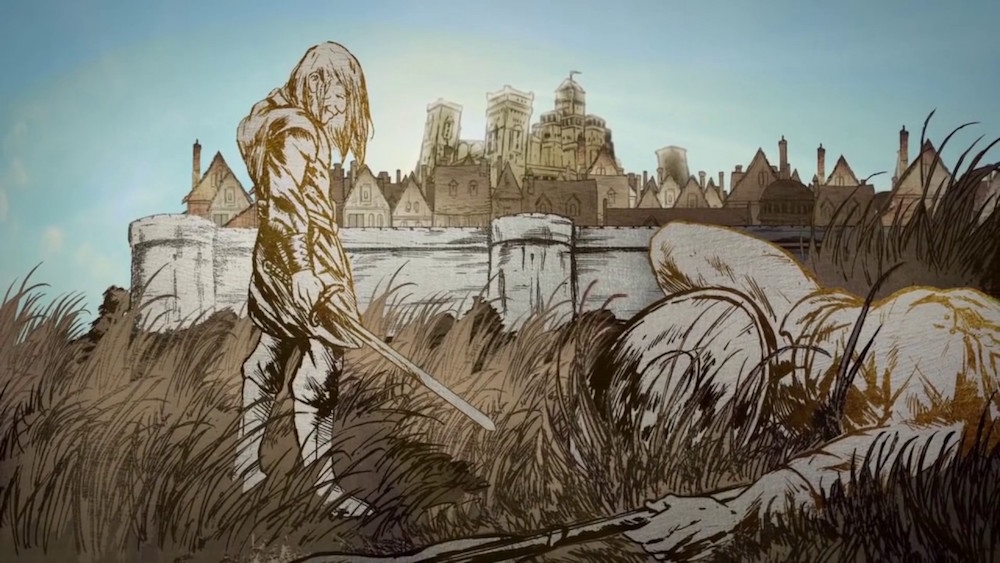
Lann the Clever Swindles Casterly Rock
And one of old Garth’s many bastards is alleged, depending on who you ask, to be Lann the Clever. Aye, once upon a time Casterly Rock did not belong to the family of Tywin and Cersei; it was in fact owned by a family called the Casterlys. Imagine that.
The Casterlys ruled the westerlands for generations before Lann came a-knocking. Well, actually, he didn’t knock at all. Rather he sneaked into the Rock by stripping naked and coating himself with butter, allegedly doing so to squeeze through a hidden cleft in the stone. (We imagine this is one of the many aspects that have been embellished). Once inside the Rock, the legends vary as to how he pushed the Casterlys out. My personal favorite is that he set up traps and howled in the night like a ghost or demon, convincing the Casterlys their castle was haunted and driving mad whichever brother tried to next take the crown for himself (he also turned brothers against each other by framing them with murderous ambition). This admittedly sounds like a bloodier episode of Scooby-Doo, and that’s why I like it.
Other legends say that Lann infested Casterly Rock with rats that scared out the residents. Yet others still say the Lion of Lannister sigil comes from Lann infesting the fortress with actual lions who ate the men but spared the women for Lann’s bed. And yet the most notorious myth further suggests Lann somehow raped all of the Lord Casterly’s daughters while they slumbered peacefully, siring their children. When the babies were born, the girls still insisted they were virgins and couldn’t explain the babes’ fair hair that was as “golden as the sun.”
No matter how it happened, Lann, whom depending who you asked was either Garth’s bastard or an enterprising Andal who crossed the Narrow Sea a few millennia prior to his countrymen, became Lord of Castlery Rock and lived to the supposed ripe old age of 312, siring hundreds of beautiful blond sons and blonder daughters. His children were so many that they were forced to found the city of Lannisport just to have enough space for separate bedrooms
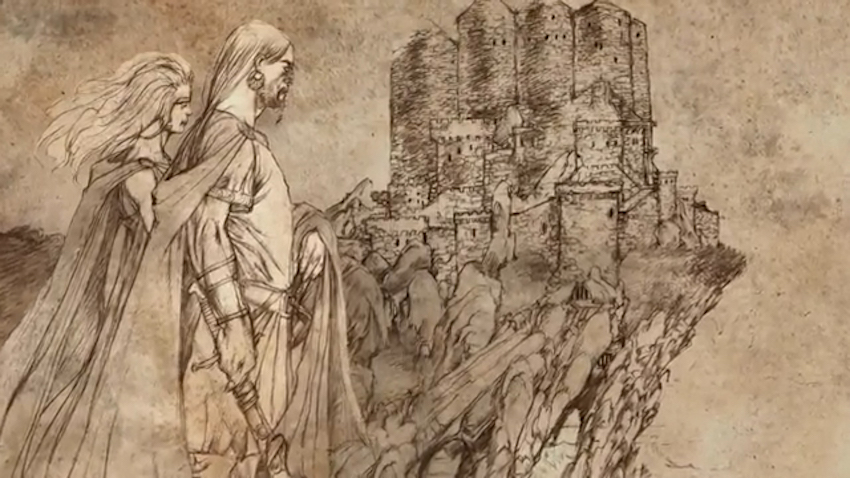
Storm’s End Defies the Gods
In what has the strongest hint of Greek myth, the story of why it rains so much in Storm’s End is apparently because of love—the love of a Durran Gosgrief, the first Storm King, and Elenei, the daughter of gods who dared fall for a mortal. There is something Tolkien-esque in the tenderness of this bitter sweet tale, thus I’m a bit wary of seeing it undercut with a probably much uglier reality.
According to the songs, Durran was but a humble man who dared to love Eleni, the daughter of the God of the Sea and the Goddess of the Wind. The two deities disapproved of their daughter’s marriage to this nobleman, but the hopelessly in love Durran and Eleni wed anyway. So on their wedding night, as husband took bride to his bedchamber, the gods’ wrath let forth a terrible storm that shattered Durran’s keep and killed all of his family and guests. Durran alone survived among the mortals, shielded by Eleni. In defiance, Durran declares war on the gods, who replied by further increasing the intensity of storms bombarding his lands.
In kind, Durran built one castle after another, facing and mocking the sea. Each castle in turn fell to ruin. That is until Durran mastered his construction process, building Storm’s End, a castle so strong that the gods themselves could but bay at the door like an unwanted beggar. Some even claim this fortress was built by Bran the Builder himself. Either way, Durran is claimed to have lived for another thousand years with his beloved Eleni by his side.
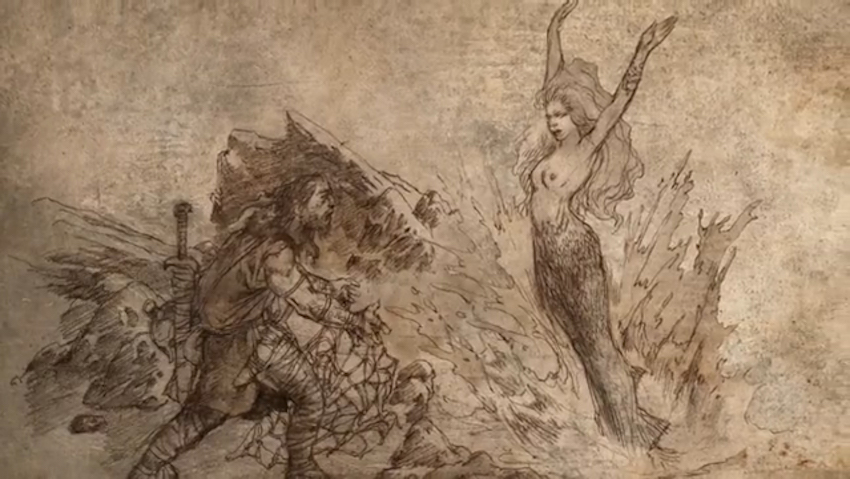
The Grey King Marries a Mermaid
The Iron Islands meanwhile have their own fairly fantastical myths that explain their origins. So enters the Grey King, a figure said to be of grey complexion in his hair and beard, even in his youth. His eyes were likewise as grey as “the winter sea.” He earned fame and notoriety in the Iron Islands though for supposedly slaying Nagga, a sea serpent dragon. From Nagga’s teeth, the Grey King built his crown, and from Nagga’s bones he constructed his Grey King’s Hall.
It is in that hall the Grey King is said to have ruled the Iron Island for 1,000 years, bringing fire to the Islanders, beginning with the still living flame of Nagga, which the monarch used to keep his home toasty warm. Also in that keep, he took a mermaid as his wife, wedding a beautiful sea siren so that his children could live in the water or on the land. Almost every great house (by Iron Islander standards) on the Iron Islands claims to be descended from this man.
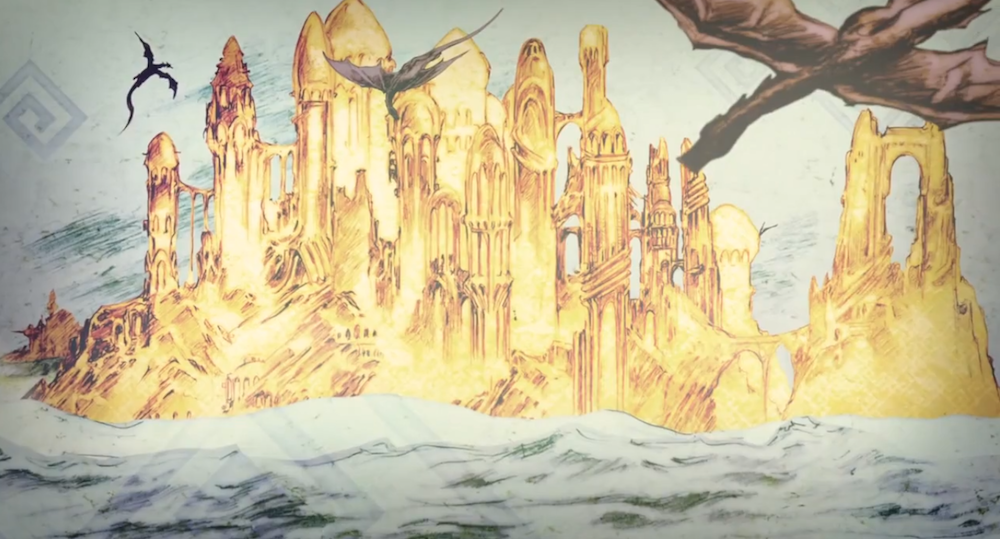
Old Valyria
I am not as well versed in Essos lore, however, if we are going back in time thousands of years, then we obviously will see Old Valyria, the first, second, third, and fourth wonder of the world in its many ages. An obvious stand-in for ancient Rome in “A Song of Ice and Fire” and on Game of Thrones, Valyria is a lost city located on a peninsula facing the Summer Sea. It is also said to be a city rich in decadence and treasure, as it is in Valyria where the dragonlords mastered their flying monsters and built Valyrian steel out of magical properties that still remain unmatched.
With fortresses that reached toward the heavens like ancient skyscrapers, Valyria was ruled over by an ethnicity of people who looked a lot like the Targaryens: silver hair and violet eyes (Dany’s eyes are purple in the books). They conquered much of Essos, including the Slaver’s Bay region that Daenerys would one day reclaim as her own, however they did this so as to acquire slaves for their mines. Their wealth was as great as their cruelty until one day… they vanished.
Valyria was lost when the Fourteen Flames, volcanic hills surrounding Valyria, much like the hills of Rome, exploded into mountainous ash. The cataclysm was so great that even dragons were consumed and melted by the apocalyptic rain of ash and fire. The seas boiled into acid, the sky was blotted out, and other allusions to Pompeii occurred as the world ended for all… save the Targaryen family. Twelve years prior to the Doom of Valyria, Daeneys the Dreamer told her father that she had a vision prophesying Valyria’s annihilation. The Targaryens thus moved their family and five dragons to the island of Dragonstone, escaping catastrophe.
It was obviously a natural disaster that took Valyria, yet some claim that in their mines beneath the Fourteen Flames, the mages and pyromancers of Valyria discovered and made pacts with creatures from the Seven Hells below. While we will never see the Doom (as it occurred about only 400 years prior to Game of Thrones), such whispers are fertile ground for a more fantastical television series.
So there you have it, 11 things we might just see in a Game of Thrones prequel. Which, if any, is the most exciting? Or would you rather let sleeping dragons lie? Let us know in the comment section below!
